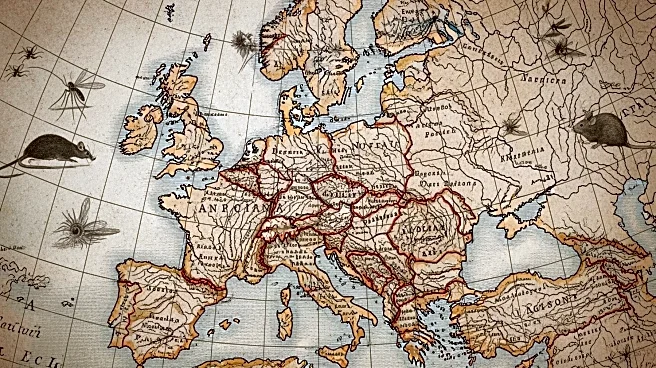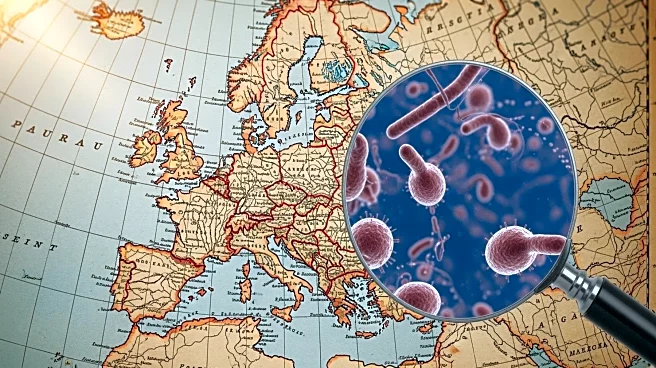What's Happening?
A new study has uncovered additional diseases that contributed to the downfall of Napoleon Bonaparte's army during its 1812 invasion of Russia. Historical accounts have long attributed the army's defeat
to typhus, a louse-borne disease. However, recent research analyzing bacterial DNA from the teeth of 13 soldiers has identified two more diseases: paratyphoid fever and a relapsing fever. These findings were published in the journal Current Biology. The study utilized modern gene-sequencing techniques to examine microbial DNA embedded in the soldiers' teeth, revealing the presence of Salmonella enterica and Borrelia recurrentis. These pathogens, transmitted through contaminated food and lice, respectively, added to the array of illnesses that plagued Napoleon's troops, alongside extreme cold, starvation, and exhaustion.
Why It's Important?
The study provides a deeper understanding of the factors that led to one of history's most disastrous military campaigns. By identifying additional diseases that affected Napoleon's army, the research offers new insights into the challenges faced by large military forces operating under harsh conditions. This knowledge contributes to historical narratives and highlights the impact of infectious diseases on military outcomes. The findings also demonstrate the power of modern genetic techniques in uncovering historical truths, potentially influencing how historians and scientists approach the study of past events. Understanding the role of diseases in historical military defeats can inform current military strategies and public health policies, emphasizing the importance of disease prevention and management in military operations.
Beyond the Headlines
The study's use of advanced genetic techniques to analyze ancient DNA underscores the evolving field of microbial genetics and its potential to reshape historical understanding. By providing a more comprehensive picture of the health challenges faced by Napoleon's army, the research highlights the complex interplay between military strategy, environmental conditions, and disease. This approach could lead to further discoveries about the impact of diseases on historical events, offering valuable lessons for contemporary military and public health planning. The study also raises ethical considerations about the preservation and analysis of human remains, prompting discussions about the balance between scientific inquiry and respect for historical artifacts.











